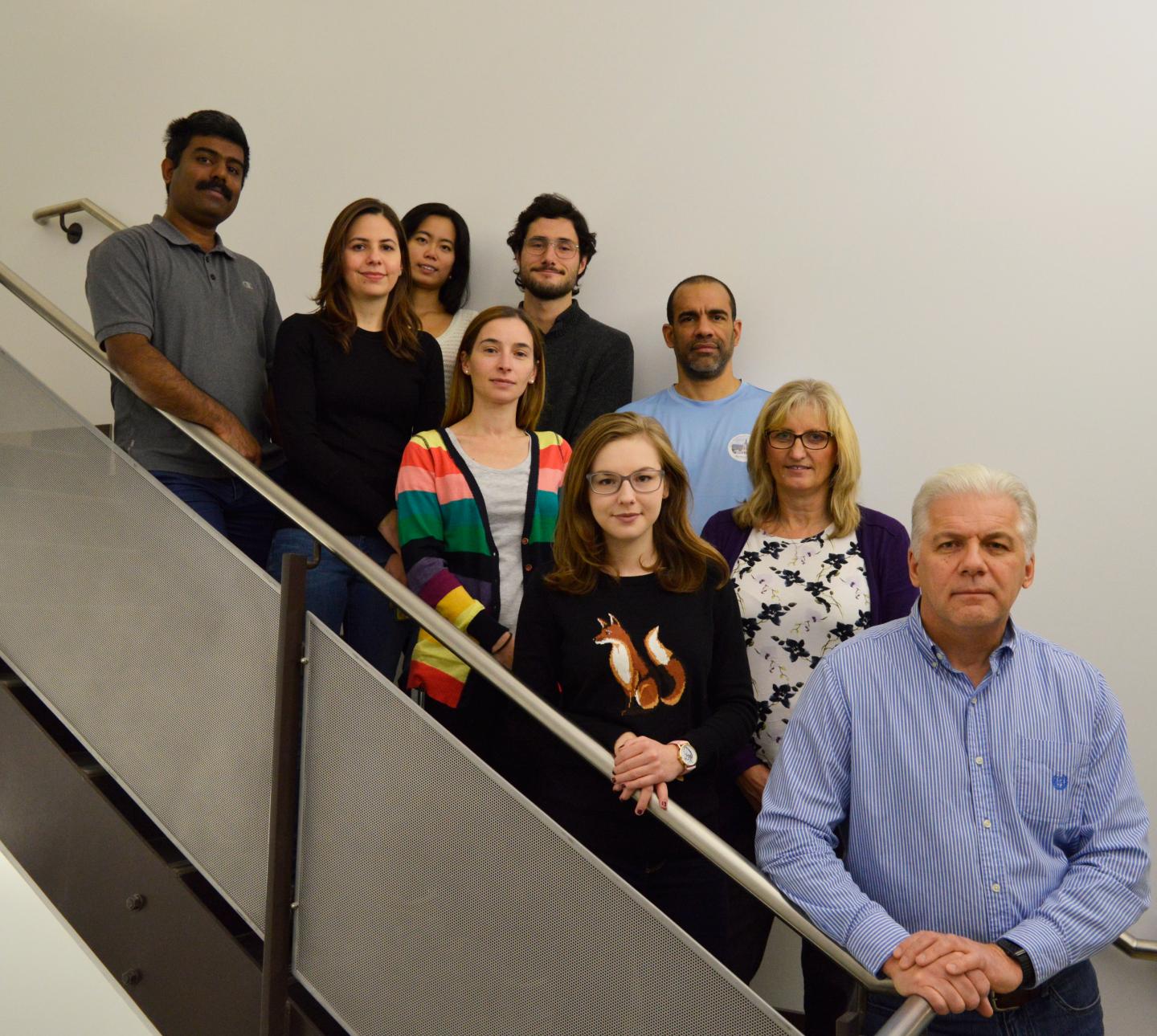
Credit: Melissa Fabrizio
For more than a year, Tom Hobman and his research team have devoted most of their waking hours to a headlong pursuit of knowledge about the Zika virus. Hobman, a professor of Cell Biology in the Faculty of Medicine & Dentistry is one of thousands of researchers across the globe racing to stop the rapid spread of the mosquito-borne virus that first came into the global spotlight in late 2015. His focused efforts have not gone unnoticed.
Hobman has been announced as one of three Canadian scientists who have received funding from the Canadian Institutes of Health Research (CIHR) for their teams to study the Zika virus. Hobman's lab has been awarded $500,000 over three years to investigate how the virus changes host cells during infection, with the goal of developing antiviral therapies that can be used against the pathogen. There are currently no antivirals or vaccines available to protect against Zika.
The three Canadian teams will collaborate with South American and Caribbean researchers who are funded by Canada's International Development Research Centre. Hobman's team will work closely with a group from the Oswaldo Cruz Institute in Rio de Janeiro, Brazil.
"They have really been at the forefront of the Zika virus epidemic. They have access to thousands of clinical samples and have been studying viral genomics. So they really have been at the front lines of the battle," says Hobman of his international research partners. "We are going to do what we're good at–cellular imaging and protein interactions–and they are going to do what they are good at. But the idea is to synergize our efforts and to accomplish more than we could individually."
As part of the project, Hobman is also interested in understanding one of the key characteristics of the Zika virus?it's ability to persist in the body for months at a time. The trait makes it unique from other mosquito borne viruses such as Dengue and West Nile viruses which are typically cleared out by the immune system in a week or two.
"By understanding the process, possibly one can develop some way to block persistence. Obviously the longer it can persist, the bigger the window of time in which the virus can be transmitted from person to person," says Hobman.
"In collaboration with their counterparts in South America and the Caribbean, these Canadian scientists will help answer some of the many outstanding questions we have about the Zika virus, ultimately providing evidence that will inform public health policy and improve how governments respond to outbreaks of the virus," said Jane Philpott, Canada's Minister of Health, in a statement.
The CIHR grant is the second to be awarded to Hobman to research the Zika virus over the past calendar year. In July 2016 he received more than a million dollars over a five-year period to screen for antiviral compounds, as well as develop research tools and diagnostic tests for the virus. As part of the project, Hobman and his collaborators hope to gain a better understanding of how the virus spreads throughout the body.
Hobman says his team's success in attracting major funding to further the research stems from the early support of the U of A's Li Ka Shing Institute of Virology and the Women and Children's Health Research Institute. Both provided early seed funding to the team.
"The seed funding was critical and allowed us to start doing experiments right away. With the support from Li Ka Shing Institute of Virology and the Women and Children's Health Research Institute funding, we were able to generate a lot of preliminary data that allowed us to secure long-term funding."
While the work that is required to stop the Zika virus remains daunting, Hobman is encouraged by the progress made over the past year as much of the world's scientific community has turned its attention to the virus.
"The scientific response to this virus has been enormous. The pace of discovery is absolutely breathtaking," says Hobman. "It's just fantastic to see how quickly things move when there is funding available. It's really remarkable. I don't think I've ever seen anything like this."
###
About the Zika virus:
Zika virus disease is caused by a virus transmitted primarily by Aedes mosquitoes.
The virus is spread by mosquito bites and can also be sexually transmitted.
The current outbreak of Zika virus began in 2014 in South America and has since quickly spread. It has now reached the Gulf Coast of the United States.
Zika virus disease is usually mild and requires no specific treatment. People with Zika virus disease can have symptoms including mild fever, skin rash, conjunctivitis, muscle and joint pain, malaise or headache. These symptoms normally last for two to seven days.
There is now scientific consensus that Zika virus infection in pregnant women can lead to microcephaly–an often fatal congenital condition associated with incomplete brain development in newborns. It is also linked to Guillain-Barré syndrome — a disorder in which the body's immune system attacks part of the peripheral nervous system. Links to other neurological complications are also being investigated.
Media Contact
Ross Neitz
[email protected]
780-492-5986
@ualberta_fomd
http://www.med.ualberta.ca





